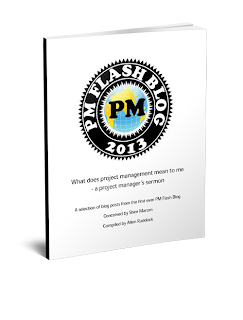Chapter 12 of my book, "Maximizing Project Value", posits game theory as tool useful to project managers who are faced with trying to outwit or predict other parties vying for the same opportunity.
The classic explanation for game theory is the "prisoner's dilemma" in which two prisoners, both arrested for suspected participation in alleged crimes, are pitted against each other for confessions.
The decision space is something like this:
- If only you confess, you'll get a very light sentence for cooperating
- If you don't confess but the other guy does, and you're found guilty, you'll get a harsher sentence
- If both of you confess, then the sentence will be more harsh than if only you cooperated, but less harsh than if you didn't cooperate
- If neither of you want to confess, you and the other prisoner might both go with a fourth option: confess to a different but lesser crime with a certain light sentence.
From there, we learn about the Nash Equilibrium which posits that in such adversarial situations, the two parties often reach a stable but sub-optimum outcome.
In our situation with the prisoners, option 4 is optimum -- a guaranteed light sentence for both -- but it's not stable. As soon as you get wind of the other guy going for option 4, you can jump to option 1 and get the advantage of even a lighter sentence.
Option 3 is actually stable -- meaning there's no advantage to go to any other option -- but it's less optimum than the unstable option 4.
Now, you can port this to project management:
- The prisoners are actually two project teams
- The police are the customer
- The crimes are different strategies that can be offered to the customer
- The sentences are rewards (or penalties) from the customer
And so the lesson is that the customer will often wind up with a sub-optimum strategy because either a penalty or reward will attract one or the other project teams away from the optimum place to be. Bummer!
There are numerous YouTube videos on this, and books, and papers, etc. But an entertaining and version is at the Khan Academy, with Sal Khan doing his usual thing with a blackboard and and voice over.
And, you can read Chapter 12 of my book: "Maximizing Project Value" (the green/white cover below)
Read in the library at Square Peg Consulting about these books I've written
Buy them at any online book retailer!
Read my contribution to the Flashblog




